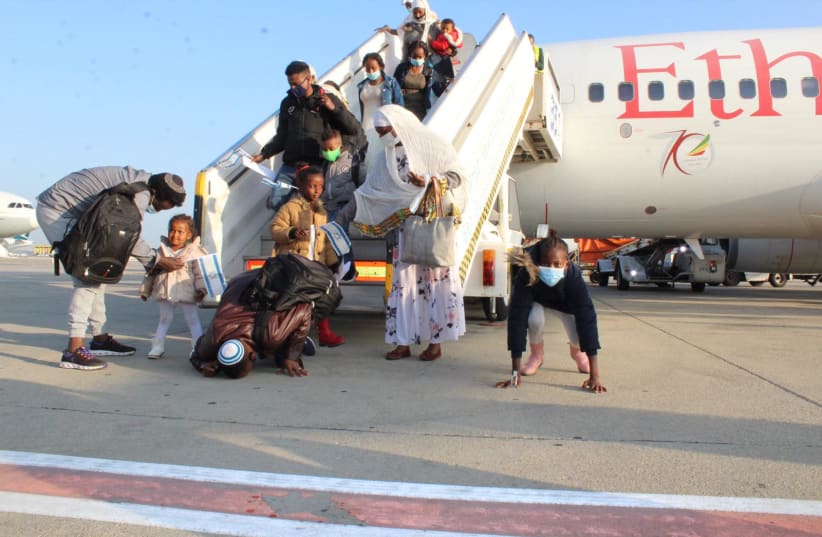This gulf between the official view that Israel is “rescuing” these immigrants, and their own proactive determination to take responsibility for their personal and communal fate, has been a feature of the immigration and absorption from Ethiopia over the decades. It reveals the trap the state seems unable to escape. On the one hand, a social, civil and national commitment backed by considerable resources to absorb the Ethiopian immigrants, ensure equality and close the gaps between the immigrants and society as a whole. On the other hand, resource-allocation mechanisms are structured in a way that all too often serves only to perpetuate discrimination, labeling and exclusion.
This trap is apparent in higher education policy, among others. The system is committed to equality and upward mobility. However, precisely through its attempts to offer equitable collective support, it in fact deepens discriminatory practices, labeling the entire community as weak and in need of support.
For example, some universities apply distinct admission criteria to candidates of Ethiopian origin in order to compensate for cultural biases in the psychometric examination. In doing so, they confront questions such as how to publicize these measures and reach out to students without stigmatizing the community.
Similarly, the state-run financial support fund for students of Ethiopian origin, raises the question whether universal eligibility of this type serves the community, or whether equality and the desire to avoid labeling would be better served if the mechanism operated on an individual basis, even at the price of reducing eligibility for support.
In 2017, a national student support program was launched titled “Encouraging excellence among students of Ethiopian origin.” Like the recent wave of immigration, this program was the product of a public struggle led by young people from the community, most of whom are Israeli-born and graduates of public schools.
These activists challenged the current reality that policy concerning the Ethiopian community is determined by the Aliyah and Absorption Ministry. In the name of equality, they demanded that responsibility be transferred to the Planning and Budgeting Committee of the Council for Higher Education. Their assumption was that the most relevant body would be best placed to provide the most appropriate responses.
Unlike other groups that receive targeted support, the Ethiopian community is relatively small – just 1.7% of Israel’s population. From a neoliberal perspective, and given this small size, support for the community can be expected to yield only marginal benefit to the economy. From a Zionist perspective, however, the image of Israel as a country that welcomes immigration and supports Jewish immigrants means that it cannot afford to withhold support or to develop structures that may be accused of ingraining discrimination.
The community struggle to hold the higher education system accountable for support of students of Ethiopian origin may seem to be a purely bureaucratic or technical matter: no more than a new name and logo. In reality, however, it is a sign of hope for meaningful change, not only in higher education but in the broader relations between the state – with its renewed commitment to equality and partnership – and the community. During this transitional phase, higher education institutions continue to confront tension between providing the required additional support and closing gaps completely, and the sometimes paralyzing fear that any additional help may expose discriminatory practices and label academia as racist.
The current wave of immigration and the change in the student support program are testimony to how the Ethiopian community revealed practices of discrimination, labeling and exclusion in order to promote change. By shifting the narrative from one of “rescue” to one of a community responsible for its own fate, these young Israelis of Ethiopian origin promote partnership and equality for their community and for Israeli society as a whole.
The writer is a doctoral student at Ben-Gurion University of the Negev and director of the national program “Israeli Hope in Academia.” She is participating in a virtual conference organized by the Ethiopia Jewry Heritage Center titled “Jerusalem – Between Ethiopia and Israel,” on Wednesday.
